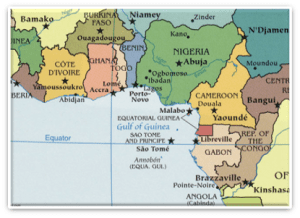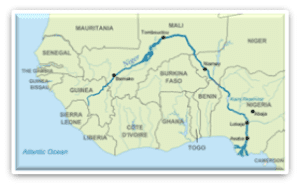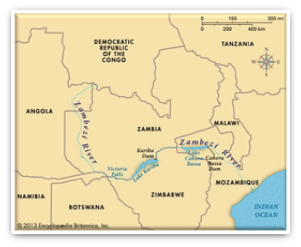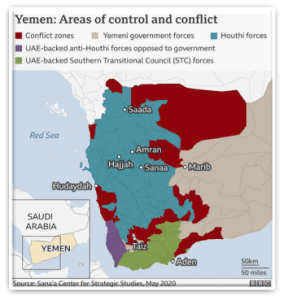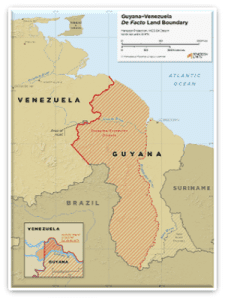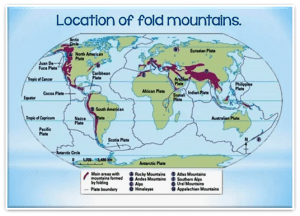(Newspapers, PIB and other important sources)
Prelim and Main
1. CMS COP14: Expect listing of new species, action plans for conservation at Samarkand summit READ MORE
2. Odisha: Gupteswar forest declared as fourth Biodiversity Heritage Site in state READ MORE
3. Andhra Pradesh: Rise in footfall in eco-sensitive areas poses threat to biodiversity and wildlife READ MORE
4. From turtles to fruit bats, migratory species increasingly under threat, says UN READ MORE
5. 8 convicted Navy veterans set free by Qatar; PM Modi to visit Doha READ MORE
6. Earth-wide telescope confirms black hole shadow is ‘real’ READ MORE
7. SC finds States do not violate Constitution in appointment of Deputy Chief Ministers READ MORE
8. What is a floor test, which Nitish Kumar won in the Bihar Legislative Assembly? READ MORE
9. 2024 peak year for Kyasanur Forest Disease, Karnataka health officials confirm as cases rise READ MORE
Main
GS Paper- 1
1. How can child safety be ensured online? READ MORE
2. Uttarakhand UCC is an attempt to control young people’s sexuality READ MORE
3. How coaching culture lets children down READ MORE
4. Arctic: The quasi-global common READ MORE
GS Paper- 2
POLITY AND GOVERNANCE
1. The real travesty: On the Governor of Tamil Nadu and the Governor’s address READ MORE
2. Uttarakhand UCC is an attempt to control young people’s sexuality READ MORE
3. 16th Finance Commission: Towards vertical and horizontal balance READ MORE
4. An exhilarating term READ MORE
5. The impact and evolution of IBC 2016 READ MORE
SOCIAL ISSUES
1. Develop skills with experimental learning READ MORE
2. Advancing the maxim of ‘One Earth, One Health’ READ MORE
INTERNATIONAL ISSUES
1. Escape from Doha: GOI’s quiet diplomacy & India’s economic heft in Qatar both contributed to ex-navymen’s release READ MORE
2. India-US ties: Beyond fleeting expediencies READ MORE
GS Paper- 3
ECONOMIC DEVELOPMENT
1. A global alliance to bridge the gender equity gap READ MORE
2. Decoding India’s economic realities: Comparing the state of the economy under the NDA and UPA governments READ MORE
3. Payments banks need new business models READ MORE
4. I-T Act clause triggers a row in MSME sector READ MORE
5. Delink disinvestment from the Budget READ MORE
ENVIRONMENT AND ECOLOGY
1. Earth’s Changing Climate READ MORE
SCIENCE AND TECHNOLOGY
1. Neurotech a ray of hope for brain disorder patients READ MORE
INTERNAL SECURITY
1. Why India is fencing its border with Myanmar — and why that could be a problem READ MORE
2. Tensions escalate in Bab-el-Mandeb Strait READ MORE
DISASTER MANAGEMENT
1. In Morbi’s debris, the role of the State in PPP projects READ MORE
GS Paper- 4
ETHICS EXAMPLES AND CASE STUDY
1. Confluence of social service with spirituality READ MORE
2. A journey through loss and healing READ MORE
3. Swami Dayananda’s pursuit of ultimate truth READ MORE
4. Choose well: Power of choice is power of God READ MORE
5. Idols and idolatry READ MORE
Questions for the MAIN exam
1. The distribution of power between the Centre and states as put forth by the Seventh Schedule of the Constitution has created a fiscal gap and led to a vertical fiscal imbalance. Examine.
2. In fiscal federalism, the objective should not be only to raise ‘backward’ states to the average level or filling the revenue gap, but also to promote a continuous process whereby states at various levels of development keep progressing constantly, with the disparities among them gradually narrowing down. Comment.
3. India’s abiding commitment to Vasudhaiva Kutumbakam and its continued efforts towards Sabka Saath, Sabka Prayaas, Sabka Vikaas, Alliance for Global Good – Gender Equity and Equality is poised to be a force to reckon with on all gender-related issues. Critically comment.
4. Strengthening legal frameworks and multilateral agreements can foster greater cooperation among nations and promote sustainable ocean governance. Comment in the light of recent turmoil in the Red.
5. The IBC of 2016 stands as a testament to India’s commitment to fostering a business-friendly environment and enhancing the ease of doing business in the country. Examine.
QUOTATIONS AND CAPTIONS
- It’s the responsibility of the police to maintain the government’s prestige and protect the honour of the citizens.
- A Governor who profoundly disagrees with the State government should not stay in office.
- It is not constitutionally sustainable to claim that the Governor’s address should contain no criticism of the Centre or make no policy pronouncements against the Centre’s policies.
- India’s launch of the Alliance for Global Good – Gender Equity and Equality is a step towards enabling ‘equity’ and ‘equality’.
- India’s abiding commitment to Vasudhaiva Kutumbakam and its continued efforts towards Sabka Saath, Sabka Prayaas, Sabka Vikaas, Alliance for Global Good – Gender Equity and Equality is poised to be a force to reckon with on all gender-related issues.
- Mainstreaming gender equality and equity has been a key development area for the Government of India for over a decade now.
- Bilateral ties between India and the US have a standalone and enduring logic of their own. The US bet on India is part of a long-term vision.
- Digital services provided by regular bank accounts have pushed them out. The Paytm fiasco points to need for a coherent regulatory response.
- In fiscal federalism, the objective should not be only to raise ‘backward’ states to the average level or filling the revenue gap, but also to promote a continuous process whereby states at various levels of development keep progressing constantly, with the disparities among them gradually narrowing down.
- Instead of expanding the arbitrary and discretionary transfers under grants-in-aids (such as Revenue Deficit Grant), FC16 should focus on increasing the vertical share for more rational transfers under tax devolution.
- Addressing the complex issues surrounding maritime security and sustainable development requires concerted international efforts and innovative solutions.
- Strengthening legal frameworks and multilateral agreements can foster greater cooperation among nations and promote sustainable ocean governance.
- The Insolvency and Bankruptcy Code IBC of 2016 streamlines insolvency resolution processes and bolstering investor confidence.
- In conflict and post-conflict scenarios, a gender perspective must be integrated into the reconstruction and redevelopment plans.
- The lack of essential services such as health care, including sexual and reproductive health services, also makes them more vulnerable to unplanned pregnancy, maternal mortality and morbidity, sexual and reproductive injuries and sexually transmitted infections. While girls face obstacles in accessing education.
- With the continued support and efforts of regulatory authorities like the IBBI, India is well-positioned to further strengthen its insolvency framework and drive economic growth and development in the years to come.
ESSAY TOPIC
- Knowledge has become fundamental to economic development and technological advancement.
- The greatest resource of all economic development is the mind.
50-WORD TALK
- India securing the release of 8 Navy veterans from Qatar is an example of fine diplomacy at work and NSA Doval’s effective backroom parleys. It is an indication of India’s growing diplomatic position in the global order. India also did well to stay away from public rhetoric over the issue.
- Pakistan elections were supposed to be a crowning moment for Nawaz Sharif, but now he will have to cobble up numbers to form a government. While some say independent candidates winning is a setback to the Army, one wonders whether this was the military’s ploy to have a weakened Nawaz.
Things to Remember:
- For prelims-related news try to understand the context of the news and relate with its concepts so that it will be easier for you to answer (or eliminate) from given options.
- Whenever any international place will be in news, you should do map work (marking those areas in maps and exploring other geographical locations nearby including mountains, rivers, etc. same applies to the national places.)
- For economy-related news (banking, agriculture, etc.) you should focus on terms and how these are related to various economic aspects, for example, if inflation has been mentioned, try to relate with prevailing price rises, shortage of essential supplies, banking rates, etc.
- For main exam-related topics, you should focus on the various dimensions of the given topic, the most important topics which occur frequently and are important from the mains point of view will be covered in ED.
- Try to use the given content in your answer. Regular use of this content will bring more enrichment to your writing.


